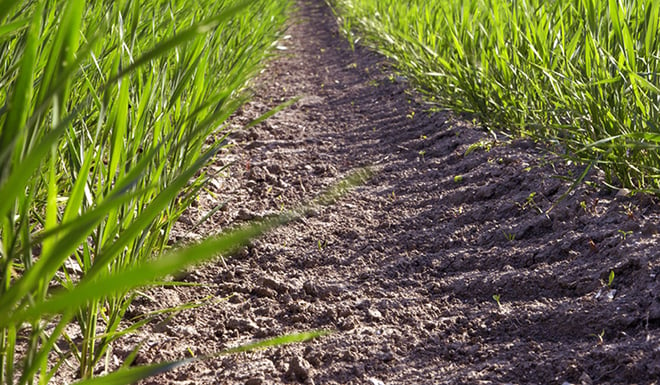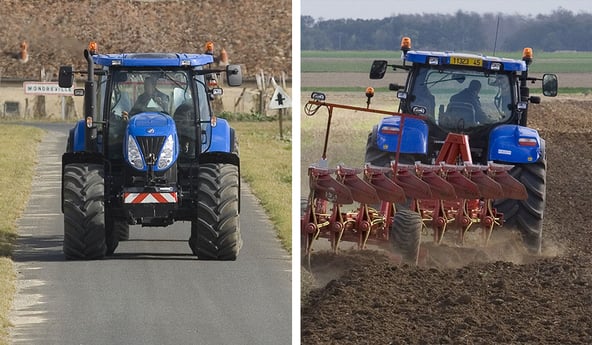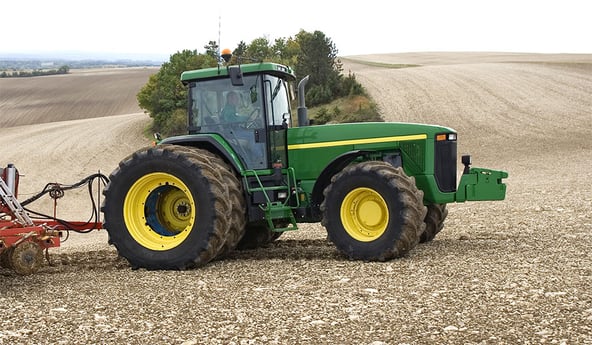Soil preservation is one of your main concerns. To limit the impact of agricultural vehicle passage, a judicious choice of tyre together with the right tyre pressure adjustment are indispensable.
But it is also very important to use…. tyres that are in good condition and that are not too worn.
The use of worn tractor tyres has a direct consequence on your soil’s potential
The use of worn tyres effectively has the same consequences on soil compaction as the use of tyres with badly adapted inflation pressure (in particular overinflated tyres), that is to say increased compaction of your land. Yet this compaction is a decisive factor in terms of your soil’s potential. Worn lugs increase tyre slippage and decrease grip, which has a worse effect on the soil structure than if you were using new tyres.
Soil compaction caused by tyres reduces root development, and as such, the quality of your crop
The earth is a living environment in which many gas and fluid exchanges take place. These exchanges are possible due to porosity and cracks between soil particles. The abundance of these cracks and slits enables good soil aeration (renewal of gasses) and as such a good oxygenation of the seedlings.
A plant’s roots capture part of this oxygen. If there is not enough oxygen, their activity is first reduced then their development is completely blocked (no new roots and no further growth). If the oxygen content is really very low, the roots will die. Compacted soil therefore reduces the depth of the root system and limits the plant’s nutrition potential. Soil aeration also plays an essential role during the germinating stage (providing oxygen after sowing).
» The reduction of biological activity has a direct impact on the quality of your soil
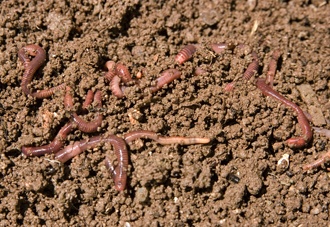 The lack of oxygen can also affect the micro-organisms present in the soil (bacteria, fungi). The biological activity, and in particular the degradation of organic material or plant waste (crop residues, leaves), is slowed down. The nutritive elements freed (namely crude protein) by these micro-organisms are therefore less available to feed the crops.
The lack of oxygen can also affect the micro-organisms present in the soil (bacteria, fungi). The biological activity, and in particular the degradation of organic material or plant waste (crop residues, leaves), is slowed down. The nutritive elements freed (namely crude protein) by these micro-organisms are therefore less available to feed the crops.
Microfauna such as worms, in particular anecic earthworms and certain insects, are also affected. Yet worms play a crucial role in soil aeration due to their tunnelling activity and by creating cracks.
» Poor water circulation decreases its storage and increases the risk of erosion
The cracks in the soil not only contain gases, but also water. Large porosities (including tunnels formed by living organisms in the soil) allow the water to infiltrate deep into the soil, thus avoiding asphyxiation of the roots. When the soil is compacted, the water tends to flow laterally in the soil or remain on the surface. The result is that less water is stored at depth. Yet this water, that serves as a reserve is vital during dry periods.
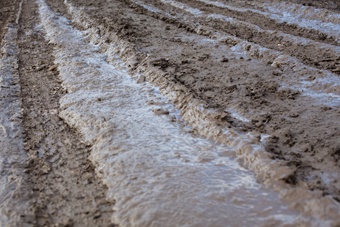 Surface water run-off leads to greater leaching of fertilizer or phytosanitary products which reduces their efficiency. Poor infiltration increases the risk of erosion and loss of soil. This phenomenon is accentuated by the creation of deeper ruts directly linked to the use of worn tractor tyres, in which the faster, channelled water carries off even more elements.
Surface water run-off leads to greater leaching of fertilizer or phytosanitary products which reduces their efficiency. Poor infiltration increases the risk of erosion and loss of soil. This phenomenon is accentuated by the creation of deeper ruts directly linked to the use of worn tractor tyres, in which the faster, channelled water carries off even more elements.
In addition, the stagnation of the water in the ruts can encourage the emergence of diseases caused by fungi in particular.
» The growth of the seedlings is slowed down considerably
As the water cannot flow deep down, the soil is wetter on the surface and warms up more slowly in the spring, which slows down crop growth. Temperature is effectively an important factor. A plant develops when the outside temperature is above its base temperature, which is specific to each plant species (0°C for wheat, 6°C for corn, for example). The higher the average daily temperatures over the crop cycle the more the plant develops, leading to a potentially better yield.
A higher temperature in spring may also allow you to harvest earlier, which is to say in conditions that are likely to be drier and better for avoiding soil compaction.
» Soil compaction makes it harder for plants to obtain their nutrition
As for the smaller porosities, they retain the water by surface tension right next to the roots. The water dissolves the mineral elements of the soil (including phosphorous and potassium which are not very mobile in the ground) and solubilises the gases, allowing them to be absorbed more easily by the plant.
The reduced number of porosities linked to the use of worn tyres reduces the capillary upwelling of water to the surface during dry periods. The plants are therefore less irrigated, less nourished and more sensitive to dry periods without precipitation.
Major negative consequences on productivity and the quality of harvests
Bridgestone-agriculture Blog is written and administered by tractor tyre experts who are available to provide you with advice on agricultural tyres. They will help you to maximise your productivity with information on all things relating to tyres: inexpensive tractor tyres, technical data for agricultural tyres, solutions for avoiding soil compaction, sprayer tyre pressure, why and how to ballast your tractor tyres, when to use dual-wheels, the mechanical causes for abnormal wear, discounted agricultural tyres, etc...
To learn more about ways to increase your farm’s productivity, bridgestone-agriculture has created a comprehensive eBook on the topic which is available for you to download for free:
Most people who read this article have also read some of the following articles:
This information is intended only to make you aware of the technical and functional aspects of agricultural tires and their use. It does not allow you to make a judgment or a definitive conclusion on a given problem. Only your agricultural tire expert is able to make a technical assessment and take a final decision, case by case.
Leave a
commentary
Your email address will not be published.
Required fields are indicated with *


